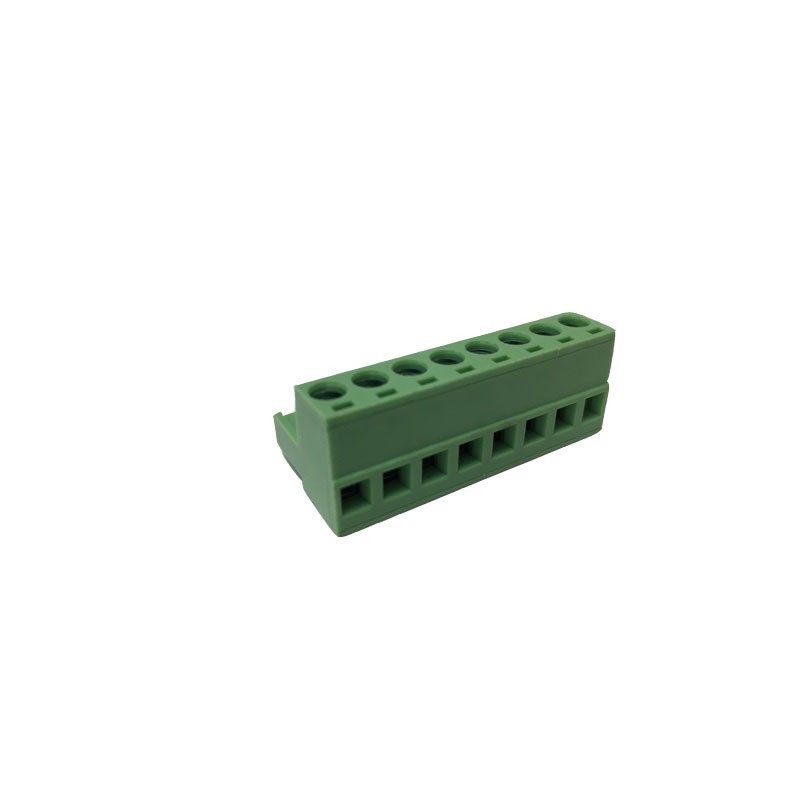PCB Board Terminal Blocks: A Complete Guide

PCB (Printed Circuit Board) Terminal Blocks are an essential component for PCBs that help in establishing electrical connections. They are primarily used in electronic devices that require a power source or for transmitting signals from one component to another on the circuit board. These terminal blocks come in various types, including PCB Pluggable Terminal Blocks, which are a popular choice for many electronic manufacturers.
In this blog, we will explore the different types of PCB Terminal Blocks, including PCB Pluggable Terminal Blocks, their advantages, and their applications. We will also discuss how to select the right PCB terminal block for your project and the importance of choosing a reliable supplier, such as RS Components.
Types of PCB Terminal Blocks
PCB Terminal Blocks come in different designs to cater to the varying needs of the electronic industry. Here are the most common types of PCB Terminal Blocks available:
1. Screw Terminal Blocks
Screw Terminal Blocks are the most basic type of PCB Terminal Blocks. They feature a screw that clamps the wire or cable in place, making a secure connection. These Terminal Blocks are also known as Barrier Strips, due to the barrier that separates each connection.
2. Spring Terminal Blocks
Spring Terminal Blocks work similarly to Screw Terminal Blocks. Still, the wire insertion process is faster and more convenient, as they use a spring mechanism, which clamps the wire in place. These Terminal Blocks are also called Push-in Terminal Blocks, and they are ideal for high-density PCB applications.
3. IDC (Insulation Displacement Connection) Terminal Blocks
IDC Terminal Blocks feature an insulation displacement connector, which pierces the wire insulation to create a secure connection. The wire is pushed into a slot, which cuts through the insulation, making connection with the conductor.
4. Pluggable Terminal Blocks
Pluggable Terminal Blocks, also known as Modular Terminal Blocks, are designed to be easily plugged in and out of the PCB. They offer a reliable and quick connection for manufacturing applications, repair, and maintenance purposes.
Advantages of PCB Pluggable Terminal Blocks
PCB Pluggable Terminal Blocks offer a range of benefits compared to other terminal block types, making them a popular choice for electronic device manufacturers. Here are some advantages of Pluggable Terminal Blocks:
1. Easy Installation:
Pluggable Terminal Blocks are simple and easy to install, saving time and effort during the manufacturing process.
2. Modularity:
Pluggable Terminal Blocks are highly modular, with various configurations, which can be easily interchanged to cater to different electrical requirements.
3. Reliability:
Pluggable Terminal Blocks are highly reliable, ensuring a secure and consistent connection while preventing the risk of short-circuits.
4. Cost-Effective:
Pluggable Terminal Blocks offer a cost-effective solution for electronic manufacturers due to their simple installation and maintenance.
Applications of PCB Terminal Blocks
PCB Terminal Blocks are used in several industries and applications, some of which include:
1. Automotive Industry
PCB Terminal Blocks are an essential component in vehicle electronics, including sensors, lighting systems, battery management, and electronic control units.
2. Telecommunications Industry
PCB Terminal Blocks are used in various telecommunications equipment, including routers, switches, and fiber optic connectors.
3. Medical Devices
PCB Terminal Blocks are used in the manufacturing of advanced medical devices, including patient monitors, ultrasound machines, and laboratory equipment.
4. Consumer Electronics
PCB Terminal Blocks are used in consumer electronics, including smartphones, tablets, and laptops.
Choosing the Right PCB Terminal Block
Choosing the right PCB Terminal Block for your project can be challenging, especially with the wide range of options available. Here are some factors to consider when selecting PCB Terminal Blocks:
1. Electrical Requirements
Consider the voltage and current requirements for your project, as well as the wire gauge size and number of wires required for the connection.
2. Environmental Conditions
Consider the environmental conditions surrounding your project, such as temperature, humidity, and vibration, to ensure that the Terminal Block selected can withstand these conditions.
3. PCB Design
Ensure that your PCB layout is compatible with the chosen Terminal Block, considering factors such as the layout space, placement, and mounting.
4. Supplier Quality
Select a reliable supplier, such as RS Components, to ensure that the selected Terminal Block meets industry standards and quality requirements.
Conclusion
PCB Terminal Blocks are an essential component in the electronic industry, with applications ranging from consumer electronics to medical devices. PCB Pluggable Terminal Blocks offer a range of advantages compared to other Terminal Block types, including easy installation, modularity, reliability, and cost-effectiveness.
When selecting a PCB Terminal Block, it is crucial to consider factors such as electrical requirements, environmental conditions, PCB design, and supplier quality. A trusted supplier, such as RS Components, offers a wide range of PCB Terminal Blocks, including Pluggable Terminal Blocks, as well as delivery options and technical support, ensuring that you find the right solution for your project.